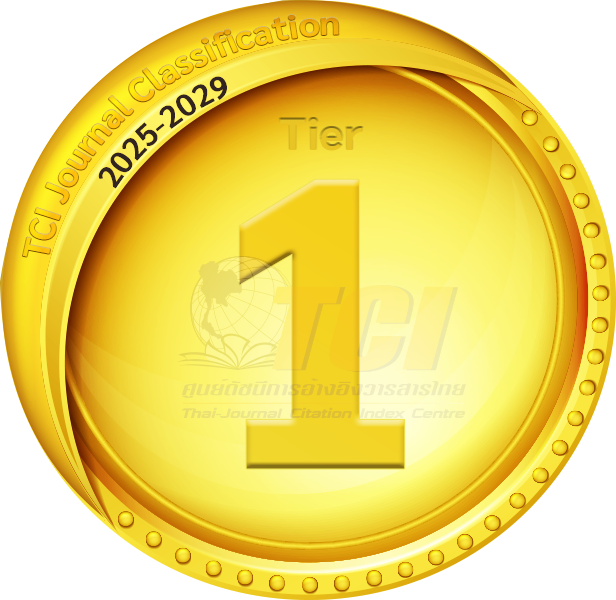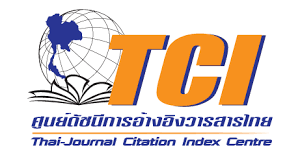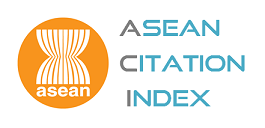An Empirical Study of Emotional Regulation and Moral Disengagement among Juvenile Delinquents in Hebei, China—The Mediating Effect of Empathy
- Wenwen Sun, Trade Union, Hengshui University, Hebei, China
- Zheyun Zheng, College of Social Innovation, Rangsit University, Pathum Thani 12000, Thailand, Corresponding author, E-mail: zhengzheyun@gmail.com
Abstract
With the continuous development of society, the issue of juvenile delinquents in China has attracted much attention in recent years. 137 juvenile delinquents in Hebei Province, China were researched, and SPSS was used to conduct difference analysis, correlation analysis and regression analysis on emotional regulation, empathy, moral disengagement, and related factors for juvenile delinquents in Hebei province, China. The results showed that the levels of emotional regulation and empathy of juvenile delinquents in Hebei province, China are at the lower middle level, and moral disengagement is at the upper middle level. Juvenile delinquents’ moral disengagement is affected by juvenile the delinquent's gender, age, education, and family structure. Juvenile delinquent's emotional regulation and empathy are influenced by juvenile their gender and family structure. The emotional regulation of juvenile delinquent has a significant negative relationship with moral disengagement. Empathy plays a partial mediating role in the relationship between emotional regulation and moral disengagement. This study’s authors believe that China should give young people positive attention and timely help from family, school and society to prevent the occurrence of juvenile delinquency. Juvenile delinquents serving sentences should be actively provided with psychological counseling, and they should be given opportunities to reform in a timely manner from the perspectives of education, reformation, and rescue.
Keywords: Chinese juvenile delinquents, emotional regulation, empathy, moral disengagement
References
Bandura, A., Barbaranelli, C., Caprara, G. V., & Pastorelli, C. (1996). Mechanisms of moral disengagement in the exercise of moral agency. Journal of Personality and Social Psychology, 71(2), 364–374. https://doi.org/10.1037/0022-3514.71.2.364
Barchia, K., & Bussey, K. (2010). The psychological impact of peer victimization: Exploring social-cognitive mediators of depression. Journal of adolescence, 33(5), 615-623. https://doi.org/10.1016/j.adolescence.2009.12.002
Bian, Y., Liang, L., & Zhang, Y. (2016). Effects of Family on Children’s Mental Development. Journal of Beijing Normal University (Social Science), 61(5), 46-54.
Brody, G. H., Murry, V. M., Kim, S., & Brown, A. C. (2002). Longitudinal pathways to competence and psychological adjustment among African American children living in rural single–parent households. Child development, 73(5), 1505-1516. https://doi.org/10.1111/1467-8624.00486
Buehler, C., & Gerard, J. M. (2013). Cumulative family risk predicts increases in adjustment difficulties across early adolescence. Journal of Youth and Adolescence, 42, 905-920. https://doi.org/10.1007/s10964-012-9806-3
Caravita, S. C., Sijtsema, J. J., Rambaran, J. A., & Gini, G. (2014). Peer influences on moral disengagement in late childhood and early adolescence. Journal of youth and adolescence, 43, 193-207. https://doi.org/10.1007/s10964-013-9953-1
Chen, H. J. (2019). A cumulative family risk index model: Delinquency and academic performance among Han Chinese and Native Taiwanese students. International Social Work, 62(4), 1245-1259.
Chen, W., Zhang, G., Tian, X., Luo, J., Gao, R., & Yang, T. (2020). Test of the Emotion Regulation Questionnaire in the middle school students. Chinese Mental Health Journal, 34(3), 206-211.
Dewi, I. P., Utomo, S. F. P., & Lestari, R. (2022). Relationship between Types of Personalities and Emotion Regulation among Adolescents with Bullying. Malaysian Journal of Medicine & Health Sciences, 18, 55-59.
Du, Q. (2020). The influence of psychological abuse and neglect on adolescent Internet addiction? The mediating role of emotional intelligence and psychological resilience (Master dissertation). Northwest Normal University.
Eisenberg, N. (2005). The Development of Empathy-Related Responding. In G. Carlo & C. P. Edwards (Eds.), Moral motivation through the life span (pp. 73–117). University of Nebraska Press.
Eisenberg, N., Fabes, R. A., Guthrie, I. K., & Reiser, M. (2002). The role of emotionality and regulation in children’s social competence and adjustment. Paths to successful development: Personality in the life course, 46-70.
Ge, H., & Liu, A. (2018). Cumulative familial risk index and adolescent self-harm behaviors. Chinese Journal of School Health, 39(5), 698-701.
Gerard, J. M., & Buehler, C. (2004). Cumulative environmental risk and youth maladjustment: The role of youth attributes. Child development, 75(6), 1832-1849. https://doi.org/10.1111/j.1467-8624.2004.00820.x
Gini, G., Pozzoli, T., & Hymel, S. (2014). Moral disengagement among children and youth: A meta‐analytic review of links to aggressive behavior. Aggressive behavior, 40(1), 56-68. https://doi.org/10.1002/ab.21502
Goldin, P. R., McRae, K., Ramel, W., & Gross, J. J. (2008). The neural bases of emotion regulation: reappraisal and suppression of negative emotion. Biological psychiatry, 63(6), 577-586. https://doi.org/10.1016/j.biopsych.2007.05.031
Gross, J. J., & John, O. P. (2003). Individual differences in two emotion regulation processes: Implications for affect, relationships, and well-being. Journal of Personality and Social Psychology, 85(2), 348–362. https://doi.org/10.1037/0022-3514.85.2.348
Gross, J. J., Sheppes, G., & Urry, H. L. (2011). Cognition and emotion lecture at the 2010 SPSP emotion preconference. Cognition & Emotion, 25(5), 765-781. https://doi.org/10.1080/02699931.2011.555753
Guo, Q. (2021). March new regulations are here! 12 years old becomes the new bottom line of the age of criminal responsibility. CCTV. Retrieved November 2, 2022, from http://news.cctv.com/2021/03/01/ARTIWw7ft9AuHF2xw5B97SCx210301.shtml
Hamidieh, Z. R. (2022). Investigating The Crime Of Embezzlement Of Managers From The Perspective Of Criminological Theories. Journal of Positive School Psychology, 6(12),1154-1166.
Hirschi, T. (2017). On the Compatibility of Rational Choice and Social Control Theories of Crime. In M. Scott (Author), The reasoning criminal. New York, UK: Routledge.
Ho, R. (2006). Handbook of univariate and multivariate data analysis and interpretation with SPSS. Sound Parkway, NW: CRC press.
Holley, S., Morris, R., Knibb, R., Latter, S., Liossi, C., Mitchell, F., & Roberts, G. (2016). Barriers and facilitators to Asthma Self‐management in adolescents: A systematic review of qualitative and quantitative studies. Pediatric Pulmonology, 52(4), 430–442. https://doi.org/10.1002/ppul.23556
Hu, Z., & Xie, W. S. (2019). Study on the relationship between college students’ emotion regulation competence, emotion adjustment regulation strategy and fluid intelligence. Journal of Zhoukou Normal University, 36(2), 139-143.
Hyde, L. W., Shaw, D. S., & Moilanen, K. L. (2009). Developmental Precursors of Moral Disengagement and the Role of Moral Disengagement in the Development of Antisocial Behavior. Journal of Abnormal Child Psychology, 38(2), 197–209. https://doi.org/10.1007/s10802-009-9358-5
Hymel, S., & Bonanno, R. A. (2014). Moral disengagement processes in bullying. Theory Into Practice, 53(4), 278-285. https://doi.org/10.1080/00405841.2014.947219
Kiarostami, A., Aghajanyhashjin, T., & Alizadeh, A. (2022). The effectiveness of music training in cognitive flexibility, empathy and aggression of adolescents. Iranian Evolutionary and Educational Psychology, 4(3), 594–605. https://doi.org/10.52547/ieepj.4.3.594
Kokkinos, C. M., Voulgaridou, I., Mandrali, M., & Parousidou, C. (2016). Interactive links between relational aggression, theory of mind, and moral disengagement among early adolescents. Psychology in the Schools, 53(3), 253-269. https://doi.org/10.1002/pits.21902
Li, C., Wang, C., Zhong, J., & Zhang, X. (2014). Secondary School Students' Attachment and Negative Emotions: The Mediating Effect of Regulatory Emotional Self-Efficacy. Chinese Journal of Special Education, 90-96.
Liu, G., & Xian, F. (2005). Techniques of neutralization theory and study of juvenile delinquency. Journal of Yantai University (Philosophy and Social Science), 18(4), 384-487.
Liu, G. X., & Lu, T. (2013). On adolescents' moral disengagement and its relationship with parenting styles. Chinese Journal of Special Education, 154(4), 78-84.
Lockwood, P. L., Seara-Cardoso, A., & Viding, E. (2014). Emotion regulation moderates the association between empathy and prosocial behavior. PloS one, 9(5), Article e96555. https://doi.org/10.1371/journal.pone.0096555
Yu, L., Wei, T., Yuan, Z., & Fang, L. (2015). Effect of Moral Disengagement on Adolescents' Externalizing Problem Behavior: Moderated Mediating Effect. Studies of Psychology and Behavior, 13(2), 251-257.
Ma, D. S., & Jiao, Z. Q. (2019). Effect of moral disengagement on bullying of adolescents in campus PE: the moderated mediation model. Journal of Tianjin University of Sport, 34(1), 80-85.
Maalouf, E., Salameh, P., Haddad, C., Sacre, H., Hallit, S., & Obeid, S. (2022). Attachment styles and their association with aggression, hostility, and anger in Lebanese adolescents: a national study. BMC psychology, 10(1), 104. https://doi.org/10.1186/s40359-022-00813-9
Malbois, E. (2023). What is sympathy? Understanding the structure of other-oriented emotions. Emotion review, 15(1), 85-95. https://doi.org/10.1177/17540739221140404
Meng, B. (2022). Delinquent Behaviors Among Post-Socialist Juveniles: How Do Social Control and Self-Control Theories Explain Them? (Doctoral dissertation). The University of Wisconsin-Milwaukee.
Mihelič, K. K., Lim, V. K. G., & Culiberg, B. (2023). Cyberloafing among Gen Z students: the role of norms, moral disengagement, multitasking self-efficacy, and psychological outcomes. European Journal of Psychology of Education, 38(2), 567-585. https://doi.org/10.1007/s10212-022-00617-w
Murphy, B. C., Shepard, S. A., Eisenberg, N., Fabes, R. A., & Guthrie, I. K. (1999). Contemporaneous and longitudinal relations of dispositional sympathy to emotionality, regulation, and social functioning. The Journal of Early Adolescence, 19(1), 66-97. https://doi.org/10.1177/0272431699019001004
Ouvrein, G., De Backer, C. J., & Vandebosch, H. (2018). Online celebrity aggression: A combination of low empathy and high moral disengagement? The relationship between empathy and moral disengagement and adolescents' online celebrity aggression. Computers in Human Behavior, 89, 61-69. https://doi.org/10.1016/j.chb.2018.07.029
Overgaauw, S., Rieffe, C., Broekhof, E., Crone, E. A., & Güroğlu, B. (2017). Assessing empathy across childhood and adolescence: Validation of the empathy questionnaire for children and adolescents (EmQue-CA). Frontiers in psychology, 8, 870. https://doi.org/10.3389/fpsyg.2017.00870
Paciello, M., Fida, R., Tramontano, C., Lupinetti, C., & Caprara, G. V. (2008). Stability and change of moral disengagement and its impact on aggression and violence in late adolescence. Child development, 79(5), 1288-1309. https://doi.org/10.1111/j.1467-8624.2008.01189.x
Roberton, T., Daffern, M., & Bucks, R. S. (2012). Emotion regulation and aggression. Aggression and violent behavior, 17(1), 72-82. https://doi.org/10.1016/j.avb.2011.09.006
Schipper, M., & Petermann, F. (2013). Relating empathy and emotion regulation: Do deficits in empathy trigger emotion dysregulation?. Social neuroscience, 8(1), 101-107. https://doi.org/10.1080/17470919.2012.761650
Snyder, H. N., & Sickmund, M. (2006). Juvenile offenders and victims: 2006 national report. Washington DC, UK: Office of juvenile justice and delinquency prevention.
Song, F., Li, R., Wang, W., & Zhang, S. (2022). Psychological characteristics and health behavior for juvenile delinquency groups. Occupational therapy international, 2022. Article 3684691. https://doi.org/10.1155/2022/3684691
Steindl, S., Bell, T., Dixon, A., & Kirby, J. N. (2023). Therapist perspectives on working with fears, blocks and resistances to compassion in compassion focused therapy. Counselling and Psychotherapy Research, 23(3), 850-863. https://doi.org/10.1002/capr.12530
Supreme people's procuratorate. (2021). The Supreme People's Procuratorate released the "White Paper on Procuratorial Work for Minors". Retrieved November 4, 2022, from https://www.spp.gov.cn/spp/xwfbh/wsfbt/202206/t20220601_558766.shtml#1
UNODC., & The World Bank. (2007). Crime, Violence, and Development: Trends, Costs, and Policy Options in the Caribbean (p. 12-49, Rep. No. 37820). The United Nations Office on Drugs and Crime and the Latin America and the Caribbean Region of the World Bank.
Wadsworth, M. E., & Compas, B. E. (2002). Coping with family conflict and economic strain: The adolescent perspective. Journal of research on adolescence, 12(2), 243-274. https://doi.org/10.1111/1532-7795.00033
Wang, L., Liu, H., Li, Z., & Du, W. (2007). Reliability and Validity of Emotion Regulation Questionnaire Chinese Revised Version. China Journal of Health Psychology, 15(6), 503-505.
Wang, L. (2017). Research on the relationship between real-life violence exposure and problem behavior of junior high school students——The mediating role of moral disengagement and emotional regulation self-efficacy (Master dissertation), Xinan University.
Wang, M., Wang, J., Deng, X., & Chen, W. (2019). Why are empathic children more liked by peers? The mediating roles of prosocial and aggressive behaviors. Personality and Individual Differences, 144, 19-23. https://doi.org/10.1016/j.paid.2019.02.029
Wang, X., & Yang, J. (2010). Reliability and Validity of Moral Disengagement Scale in Chinese Students. Chinese Journal of Clinical Psychology, 18(2), 177-179.
Wang, X., Lei, L., Liu, D., & Hu, H. (2016). Moderating effects of moral reasoning and gender on the relation between moral disengagement and cyberbullying in adolescents. Personality and individual differences, 98, 244-249. https://doi.org/10.1016/j.paid.2016.04.056
WHO. (2018). Engaging young people for health and sustainable development: strategic opportunities for the World Health Organization and partners. World Health Organization
Wu, S. & Zhang, Y. (2013) Urbanization, Crime and Social Management. Beijing: Social Sciences Academic Press.
Yahaya, A., Bachok, N. S. E., Yahaya, N., Boon, Y., Hashim, S., & Goh, M. L. (2012). The impact of emotional intelligence element on academic achievement. Archives Des Sciences, 65(4), 2-17.
Yang, J., & Wang, X. (2011). Interparental conflict and aggressive behavior: The mediating effect of the moral disengagement. Psychological Development & Education, 27(5), 498-505.
Yang, J. P., Li, Y., & Wang, X. C. (2014). The effect of empathy and moral disengagement on online irrational behavior of junior high school students. Journal of Shanxi university (Philosophy and Social Science Edition), 37(40, 122-128.
Zhang, L., Qian, S., & Wang, W. (2008). Adolescent Aggressiveness: A Childhood Psychological Abuse and Neglect Model. Medicine and Society, 21(11), 52-54.
Zhang, Y. (2022). Empathy's educational value, educational misunderstandings and training paths. Teaching & Adimistration, 7, 5-9.

Indexed in


Search